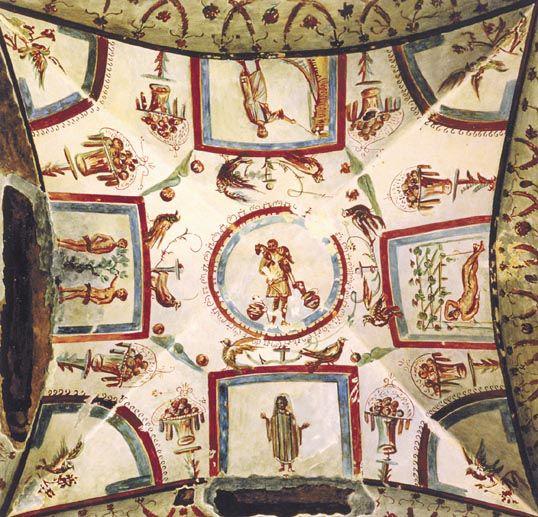
The
Catacombs of Rome
The locations of all places
are shown on my Google-Earth
Map
Google-Maps (increase the magnification, this map is in 3-D)
The Catacombs of Rome are underground necropolis related
to the Etruscan underground cemeteries. There are at least forty,
some discovered only in recent decades.
Though most famous
for Christian burials, there are Jewish and "heathen"
graves either in separate catacombs or mixed together. They began to
be dug in the 2nd century AD as a solution to overcrowding of
cemeteries and shortage of land.
While past students
have written, and much of the public today still thinks, that
catacombs came about to help persecuted Christians to bury their dead
secretly, this myth has been debunked: Among other reasons,
catacombs always were placed along major highways (which would have
meant they couldn't be kept secret for long), pagans also used
catacombs although their religion was legal, and most catacomb
building took place after Christianity's legalization.
Their
art (frescoes) are rudimentary and primitive compared to Roman
painting, or the older Etruscan necropolis, but they depict the slow
emergence of Christian themes and symbols, and therein lies their
art-historical importance.
There is a northern group on
or near Via Salaria and a better known southern group along Via Appia
Antiqua. - Not all are accessible without special introductions.
Northen Catacombs along Via Salaria
Catacomb
of Priscilla
430
Via Salaria,
2nd-14th cent AD
The Catacomb of Priscilla on the Via Salaria is situated in what was a quarry in Roman times, currently located beneath the basilica San Martino ai Monti. This quarry was used for Christian burials from the late second century through the fourth century. Some of the walls and ceilings display fine decorations illustrating Biblical scenes.
Access to the murals may require special permission

Ceiling
fresco in the Cemeterium Maius, part of the large Catacomb of
Priscilla, painted c.320-40. The central figure of the Good Shepherd
is surrounded by images of Adam and Eve, Moses striking the rock,
Jonah under the gourds, and a woman at prayer.
Text and
photo from churchtimes.co.uk
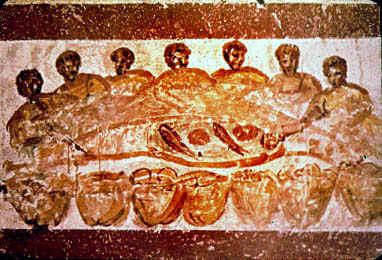
Agape feast or Last Supper (3rd cent)
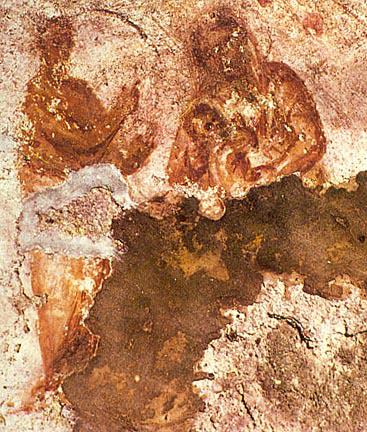
One
of the earliest Madonnas, 2nd cent. Photo from Wikipedia
The
wikipedia article is
full of errors.
Via Salaria 430 (enter through the cloister of the monastery of the Benedictines of Priscilla. Buses 86, 92, 310 from Termini station), ☎ tel.: 06-86206272 fax.: 06-86398134, [2]. 8.30 - 12.00 and 14.30 - 17.00 closed Mondays. Euros 6.
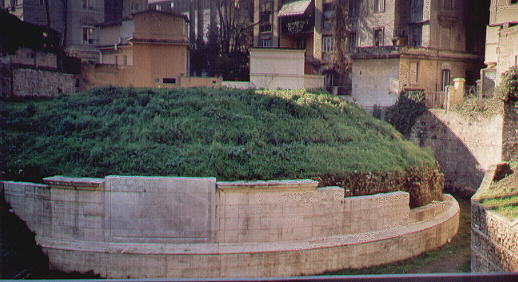
The tumulus
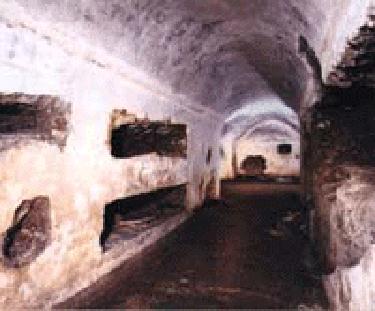
Tomb chambers below

Chapel of St. Sabina in the catacombs.
The catacombs of St. Agnese are below the church of Sant'Agnese fuori
le mura. (see there)
Via Nomentana 349 - tel. 06 861 08 40 (
closed on Sunday mornings and on Monday afternoons)
Buses:
60 (from Piazza Veneizia) and 90 (from Termini)
Southern Catacombs in the Vicinity of Via Appia Antiqua
See
my Google-Earth Map for
Locations in the Campagna
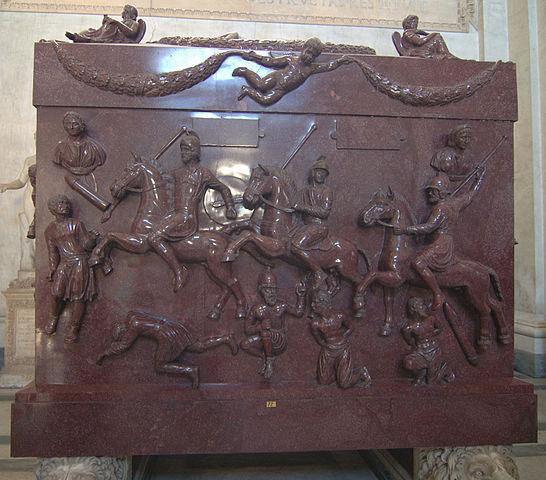
Sarcophagus of Helena, Vatican Mueum 328
The Mausoleum of Helena, next to the Catacombs of Marcellinus and
Petr, was built by Emperor Constantine I between 326 and 330,
originally as a tomb for himself, but later assigned to his mother,
Helena, who died in 328.
Via Casilina, 641, 00177 Roma
Far
out - access by Regional Trains: San Marcellino Station - Roma
Pantano Line
In 2006, over a thousand skeletons were discovered in these catacombs; the skeletons were stacked one on top of each other and still bore the togas they were buried with.
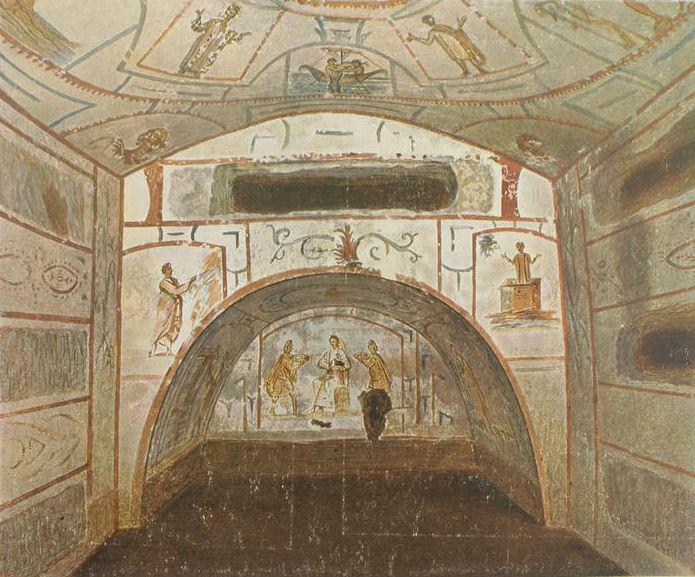
Burial camber, murals before 5th cent AD

Jonah being thrown to the whale (4th cent)
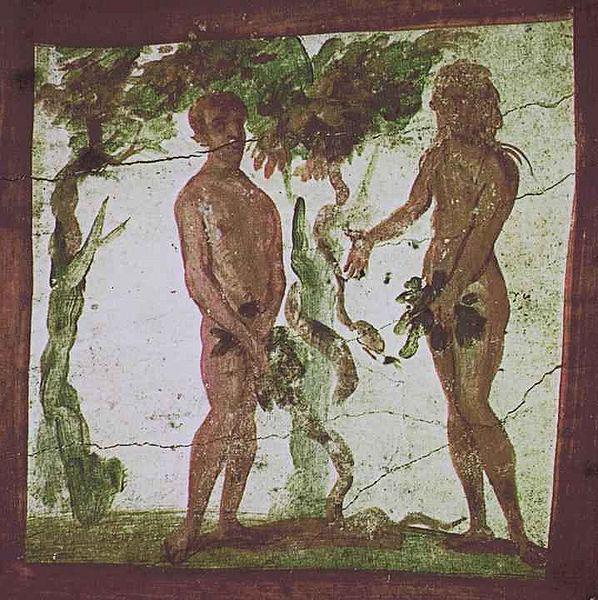
Adam and Eve (before 5th cent)
Via Casilina, 641, 00177 Roma
Chiese Parrochiale S. Marcellino A
Torpignattara , Via Casilina, 641, 00177 Roma, Italy, +39 06 241
9446
Regional Train: San Marcellino Station - Roma Pantano
Line, ATAC station: Berardi
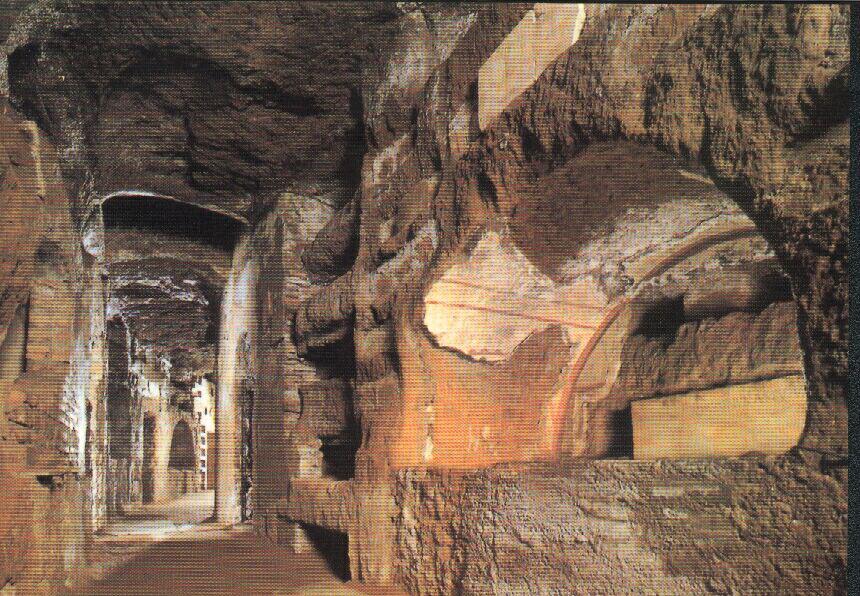
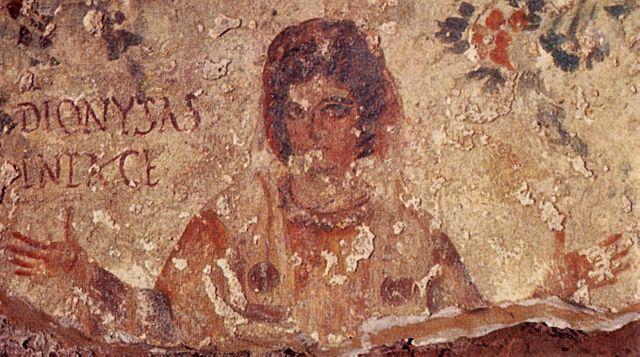
Lady praying

The Good Shepherd, Calistus' catacomb
e
To
reach the Appian Way from Termini station, take the 714 bus from
outside the station, and change at the 6th bus stop (St Giovanni
Laterano) to the 218 bus, which will take you all the way to the main
entrance of the San Callisto catacombs and then on to San Domitilla
catacombs and the Fosse Ardeatine.
Beware that buses in this
area are not reliable, particularly in the morning or evening rush
hours when journeys can be delayed or even arbitrarily cancelled.
From the main sites along the Appian Way, consider
returning to Rome
with
a walk through the Caffarella Park, which will bring you to Metro
Line A (2.8 km - see GE map) Colli Albani-Via Appia Antica Station
Catacombs
of Callisto, Via Appia Antica 110-126 (Located in a large
diamond-shaped park between the Appian Way and Via Ardeatino. To
reach the Appian Way, see above. If you don't fancy the 1km walk from
the main entrance, the 118 goes further along the Via Appia and you
can enter the catacombs through a small gate to the right at the
third stop. Beware, however, that the 118 runs only every 40 minutes
and is not reliable.), ☎ +39 06 513 01580. 9.00 - 12.00 and 14.00 -
17.00. Closed Wednesdays The price of admission is € 8.-; reduced:
€ 5.-
Reference: sacred-
destinations
also: catacombe-roma

Orpheus as Christ (2nd-3rd century)
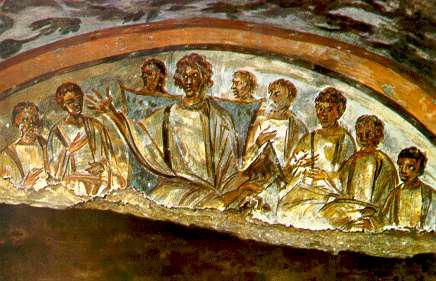
Christ among the Apostles (4th cent)
Via delle Sette Chiese 280 (continue on the 218 from the entrance to San Callisto. Get off at the junction with via delle Sette Chiese and walk northwest for 200m.). 9.00 - 12.00 and 14.00 - 17.00. Closed on Tuesdays and in January.. The Catacombs of Domitilla are considered to be the best preserved of all Roman catacombs – but the frescoes are not shown without special dispensation!
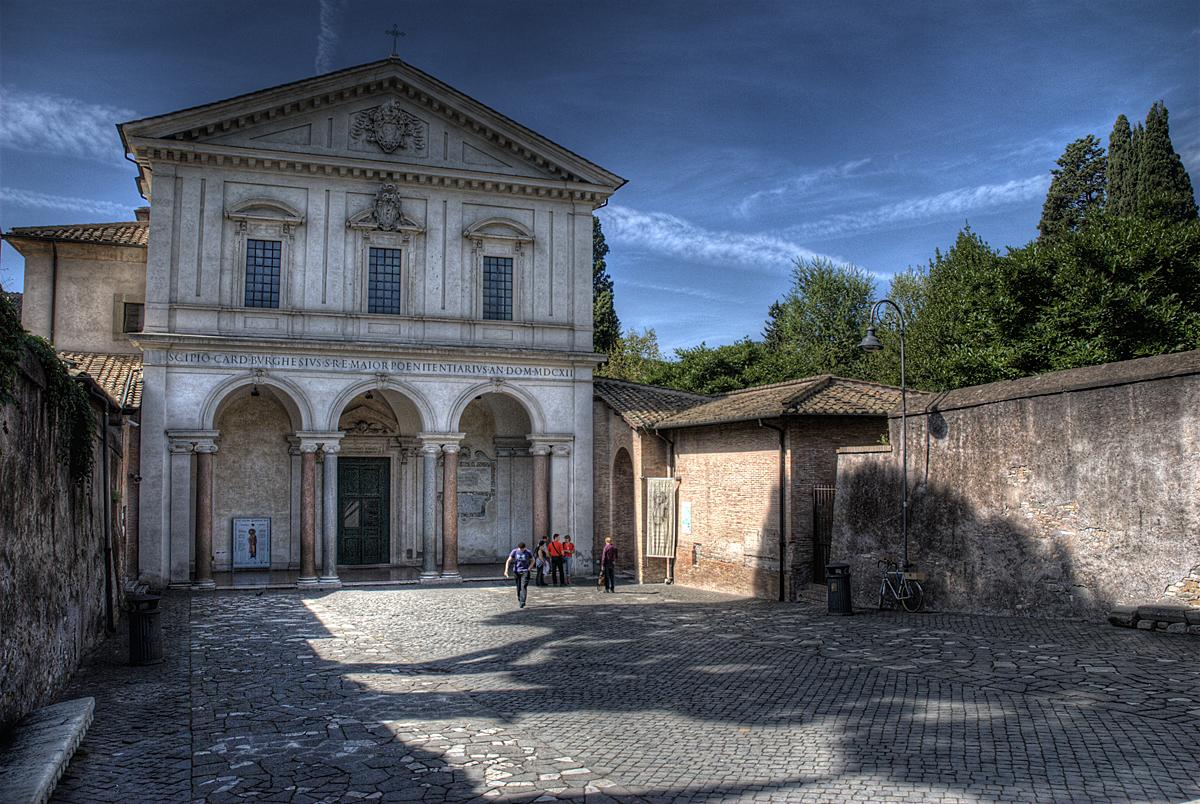
The Catacomb of San Sebatiano, founded in the 3rd century, is located beneath a church of the same name on the Via Appia Antica, beyond the Catacomb of San Callisto. It was dug out in a rock quarry in a valley, and was thus referred to by the description in catacumbas from the Greek word for "sunken valley." Since this was the only underground cemetery to be maintained after ancient times, all other ones came to be called "catacombs" when they were discovered.
The Church of San Sebastiano has been in continous use ever since. It was restoredy by Pope Hadrian I (772-95) and remodeled in the 12th or 13th century. Excavations of the catacombs were undertaken from 1892 to 1961.
(Bus 118 to the entrance. Bus 218 to Fosse Ardeatina then turn left on foot along Via delle Sette Chiese for 400m.). 9.00 - 12.00 and 14.00 - 17.00. Closed Sundays and 15 Nov. to 15 Dec..
One of the earlyest necropolis. These catacombs, on the Via Ostiensis, contain one of the earliest images of a bearded Christ. They originally held the relics of Saints Felix and Adauctus.
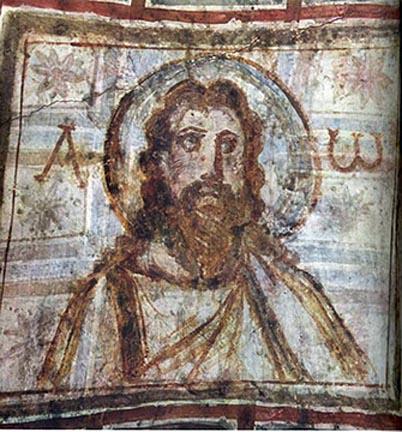
Bearded Christ, from catacombs of Comodilla